
Fall Plants Intrigue FODMers
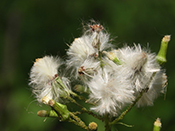
Twenty FODMers delighted in studying the plants of the preserve on a walk led by Dr. Elizabeth Wells on September 17, 2022. Many plants were dropping or ready to drop their seeds to start the next generation.
Butterflies and Dragonflies Abound
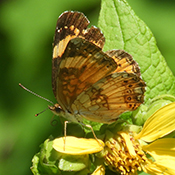
On July 20, 2022, 20 butterfly enthusiasts spotted 15 species of butterflies, on a walk in Dyke Marsh, led by Larry Meade.
Talented FODM Photographers Are Winners

Congratulations to two FODMers whose photographs were selected for the 2022 Virginia Wildlife magazine’s annual photography showcase.
Historic Imagery Viewer Shows Changes over Time

Fairfax County has an imagery viewer that can help people understand the extent of the wetland in the past and provide context for marsh restoration.
An FODM Ecology Walk
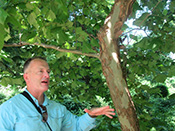
On June 25, 2022, ecologist Charles Smith led a walk for 20 members of the Friends of Dyke Marsh along the Dyke Marsh Haul Road trail. He explained that Dyke Marsh is in the coastal plain, a geologic region with gravel deposits, unlike the Piedmont which has many rock formations. Dyke Marsh, a freshwater tidal wetland, has two three-foot tides a day, on average.
FODM Recognizes Volunteers
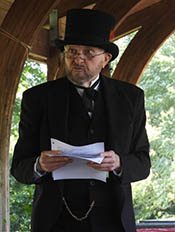
On June 19, 2022, the Friends of Dyke Marsh held an event to express appreciation to the organization's many dedicated volunteers. Here is an article about the event from the June 23, 2022 Mount Vernon Gazette/Connection newspaper. By Glenda C. Booth
Celebrating Juneteenth 2022

On June 18, 2022, the Friends of Dyke Marsh again participated in the annual Gum Springs Community Day and celebrated Juneteenth with our friends.
Awed by Owls
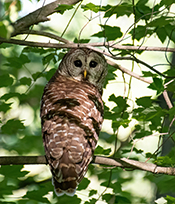
Many people have been captivated by owls in Dyke Marsh this spring. Several people have confirmed a barred owl (Strix varia) pair raising two young and a great horned owl pair (Bubo virginianus) with one young. It’s parenting at its best.
A Wild Turkey in Dyke Marsh
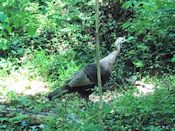
In late May, several people observed a wild turkey (Meleagris gallopavo) on and near the Haul Road trail. Our FODM breeding bird survey leader Larry Cartwright reported on May 29, 2022, “A hen wild turkey strolled down the path near the Haul Road entrance. The turkey was icing on the cake.”
The next day, FODMer Ed Eder snapped a photo and speculated, “The well-fed turkey is probably consuming a lot of insects in the native planting area.” On May 30, 2022, Leila Saldanha took several photos of “our” turkey.
Youngsters Delight in Learning about Dyke Marsh
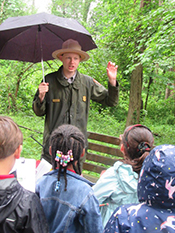
On May 24, 2022, partnering with National Park Service Ranger Douglas Breton, the Friends of Dyke Marsh welcomed 60 curious, second-grade students and their teachers from Alexandria’s St. Stephens and St. Agnes School to Dyke Marsh.
Curbing Plastic Pollution

From plastic bottles to plastic straws, fishing lines, clothing, carpets and diapers, plastic in the environment is ubiquitous. Sarah Kollar from Ocean Conservancy and Kurt Moser from the Four Mile Run Conservatory Foundation discussed both the challenges of and solutions to plastic pollution in presentations at a May 19, 2022, FODM meeting.
FODMers Determine Habitat Quality of an Area Stream
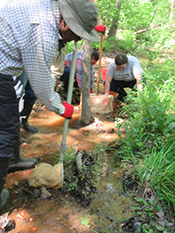
Since 2016, FODM volunteers have conducted habitat quality monitoring in an unnamed, intermittent stream that flows through Mount Vernon Park into west Dyke Marsh, most recently on April 11 and May 10, 2022.


AlbertHerring-b4cc6b5cfb.jpg)



 Friends of Dyke Marsh, Inc. is a non-profit 501(c)(3) organization.
Friends of Dyke Marsh, Inc. is a non-profit 501(c)(3) organization.